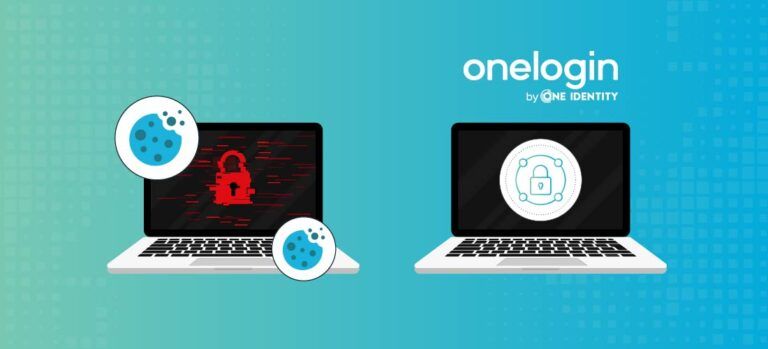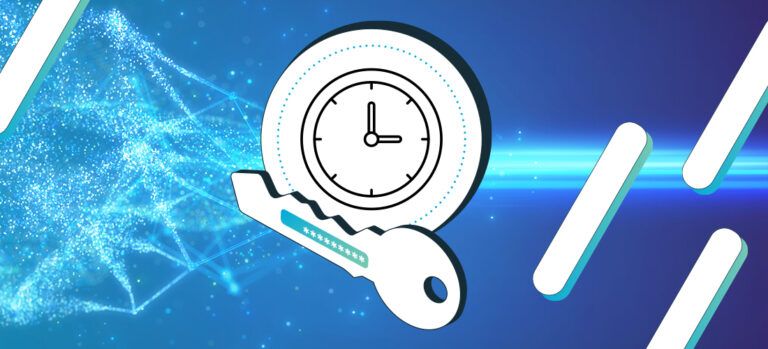
As part of our blog series on Advanced Authentication, we have discussed what it is and how it can help organizations, provided best practices in deploying this authentication approach and highlighted the benefits of FIDO2 and WebAuthn within this context. In this blog, we will explore how organizations can deliver frictionless user experiences while delivering a strong level of advanced authentication protection.
In today’s digital landscape, finding the right balance between a frictionless user experience and strong security is crucial for organizations. Users expect seamless access to applications, while businesses must keep their valuable assets safe from cyber threats. From convoluted login processes to forgotten passwords, even minor obstacles can lead to frustration and decreased efficiency. Beyond immediate frustration, a consistently poor user experience can have far-reaching consequences. It can lead to disengagement, decreased user adoption, and potential customer attrition. The delivery of frictionless user experiences is essential to enhancing productivity and satisfaction. At the same time, companies should never compromise security to do so. So, how do organizations strike the proper balance?
Organizations can strengthen their security posture by adopting an access management approach that utilizes strong factors combined with risk-based authentication. The access management mechanisms and authentication factors used as part of the authentication process must take users on a frictionless journey from authentication to access, ensuring that employees remain productive, and that customers have easy access to resources to help drive customer retention and business growth.
Streamline user authentication & application access with Single Sign-On (SSO)
Single Sign-On (SSO) redefines the user experience by connecting users to multiple applications with a single set of credentials. That means no more juggling numerous passwords or enduring repeated logins. This streamlined access not only boosts productivity but also enhances overall satisfaction. Beyond the convenience it offers, SSO significantly strengthens security, reduces the attack surface and mitigates the risk of password-related vulnerabilities by providing centralized user authentication. This duality of providing a seamless experience while fortifying security highlights how SSO exemplifies the delicate balance between user-centric design and enhanced protection.
The video below showcases how OneLogin SSO offers organizations a comprehensive solution that improves both user engagement and satisfaction as well as data protection.
Empower users with self-service password management
Conventional approaches to password management frequently lead to frustration and hamper productivity. When users encounter forgotten passwords, they find themselves caught in a laborious loop of contacting IT support for password resets. This process disrupts their workflow and places avoidable pressure on IT teams.
An access management solution that provides self-service password reset capabilities empowers employees, partners and customers alike to independently reset forgotten passwords without requiring IT assistance. Through a user-friendly interface, users can swiftly regain access to their accounts, ensuring a seamless and efficient experience while maintaining robust security measures. Organizations seeking a stronger authentication access management approach should incorporate passwordless authentication (e.g. passkeys, biometrics, etc.) into their authentication flows, fortifying security and eliminating the need for password resets.
Watch this video to learn how a user can easily reset his password using OneLogin.
Strengthen protection and increase ease of use with passwordless authentication
Passwordless authentication introduces a transformative leap forward in user identity verification. This authentication approach modernizes security while enhancing user experiences by eliminating the need for traditional passwords. Instead of relying on easily compromised passwords, passwordless authentication leverages advanced methods such as biometrics, push notifications, or security keys. These modern techniques create a unique and nearly impenetrable layer of defense, ensuring that only authorized users gain access to resources.
Beyond heightened security, passwordless authentication dramatically simplifies the user journey. No more fretting over forgotten passwords or struggling with complex username and password combinations. Instead, users can seamlessly authenticate themselves through methods they are already familiar with, such as using their fingerprints, facial recognition, or a quick tap on their smartphones. This streamlined experience reduces friction and bolsters user confidence, ultimately fostering a more positive relationship with the authentication process. By balancing robust security and user-centric design, passwordless authentication paves the way for a future where access is both effortless and secure.
Let’s take a look at how OneLogin delivers passwordless authentication for organizations.
Elevate security with Adaptive Multi-Factor Authentication (MFA)
Adaptive multi-factor authentication (MFA) provides a cutting-edge approach to user verification that goes beyond traditional methods. It leverages contextual and adaptive factors to ensure enhanced security without compromising user convenience. By analyzing a range of dynamic elements such as device, location, time and behavior patterns, adaptive MFA tailors the authentication process to the unique context and risk-level of each login attempt.
Through this process, adaptive MFA dynamically adjusts security requirements. For instance, an organization using OneLogin SmartFactor Authentication can allow streamlined access if a user is accessing an application from their usual location and device during their typical work hours. However, if an unusual geo-location or device is detected, OneLogin can prompt the user for additional authentication steps which may include stronger authentication factors. This approach to adaptive MFA bolsters security against potential threats and creates a seamless experience for users.
This video demonstrates how OneLogin’s SmartFactor Authentication provides the best of both worlds – comprehensive protection and a seamless user experience.
Adopt advanced threat detection practices using OneLogin SmartFactor Authentication
OneLogin SmartFactor Authentication can perform advanced threat detection by scrutinizing various factors, including geo-velocity and suspicious browser usage, to calculate and adjust a user’s risk score. Geo-velocity refers to the speed at which a user’s location changes, which can indicate suspicious or unauthorized activity. If a user’s login attempt occurs from a geographically distant location in an unusually short period of time, their risk score increases.
Similarly, using suspicious browsers that are often associated with anonymizing web traffic, such as Tor browsers, could suggest potential malicious intent. These events impact a user’s risk score by contributing to a more comprehensive assessment of their login attempt. Each factor, like geo-velocity and Tor browser usage, carries a certain weight in the risk calculation. When such events occur, they elevate the calculated risk score, signaling a potential threat and triggering a stronger authentication flow.
Depending on the security policy in place, this increased risk score can prompt the user to perform Multi-factor authentication (MFA) or even deny the user access altogether. OneLogin SmartFactor Authentication effectively adapts its response to the evolving risk landscape, proactively safeguarding sensitive data and resources.
View this video to learn how harnessing these sophisticated detection mechanisms can help your organization remain vigilant of emerging threats and ensure robust and dynamic protection.
Automate identity lifecycle management
OneLogin Identity Lifecycle Management streamlines the entire user journey from onboarding to offboarding. It simplifies access by seamlessly provisioning new users, ensuring they have the correct permissions. As users change roles within an organization, the system adjusts their access and permissions effortlessly. When the time comes to depart, OneLogin Identity Lifecycle Management ensures a secure offboarding process, revoking access promptly. This holistic approach enhances user convenience and fortifies security by maintaining precise control over user access throughout their lifecycle.
View this video to find out how OneLogin Identity Lifecycle Management manages employee onboarding, provides seamless access and swiftly removes employee access rights when the employee leaves the organization.
Now, more than ever, the delicate balance between a seamless user experience and robust security is of utmost importance for organizations looking to adopt advanced authentication protection. The expectation of unhindered access to applications is met with the necessity of safeguarding invaluable business assets from cyber threats. Striving for a frictionless user experience is pivotal in boosting productivity and satisfaction. However, it’s crucial to underscore that companies don’t need to compromise security to achieve this goal.
In this blog, we’ve delved into strategies that synchronize these seemingly opposing forces. From SSO, passwordless authentication and adaptive MFA to streamlined identity lifecycle management, each facet represents a step forward in achieving synergy between enhanced user engagement and comprehensive data protection. OneLogin Advanced Authentication suite of products provides the much-needed balance between ease of use and protection that empowers users while fortifying defenses. Embrace these solutions and embark on a journey where the user experience is frictionless and your business assets are well protected.
To learn more about OneLogin Advanced Authentication and how it can benefit your organization, visit www.oneidentity.com/solutions/advanced-authentication.


